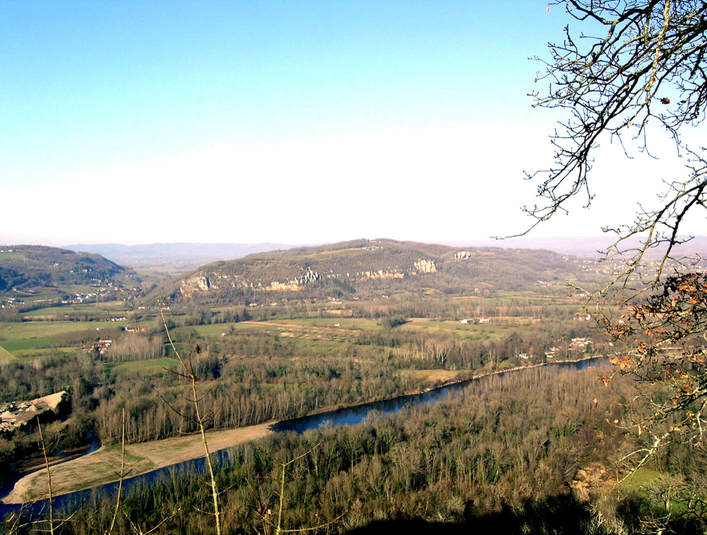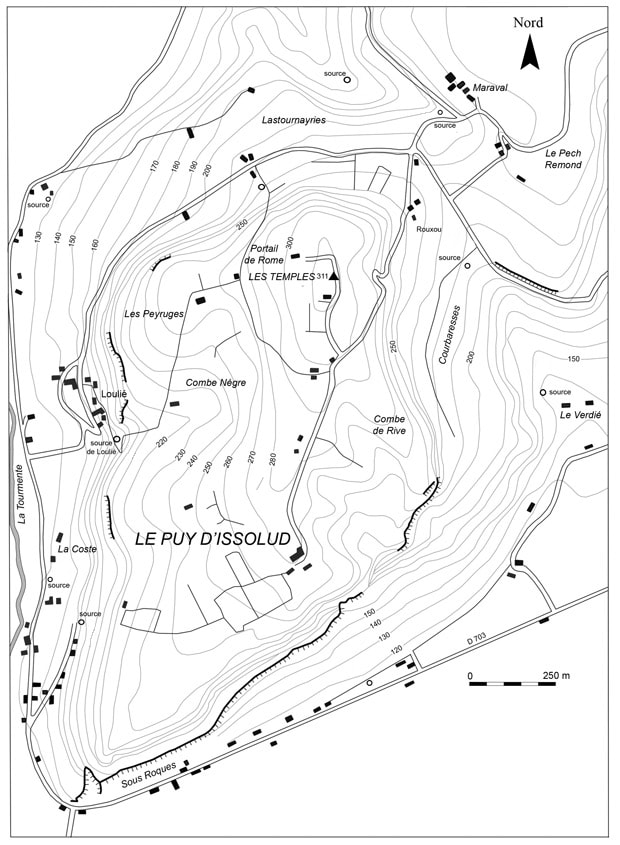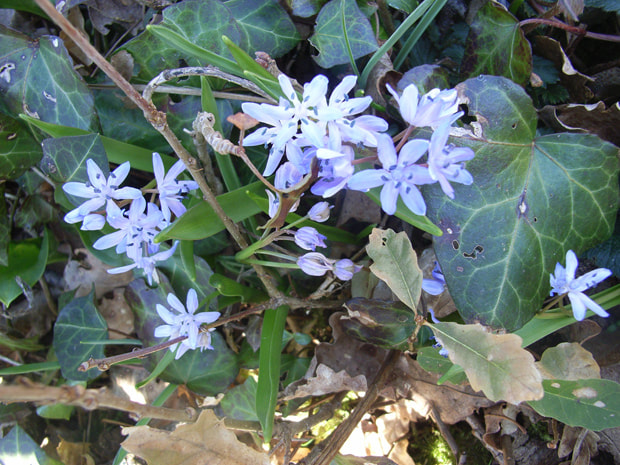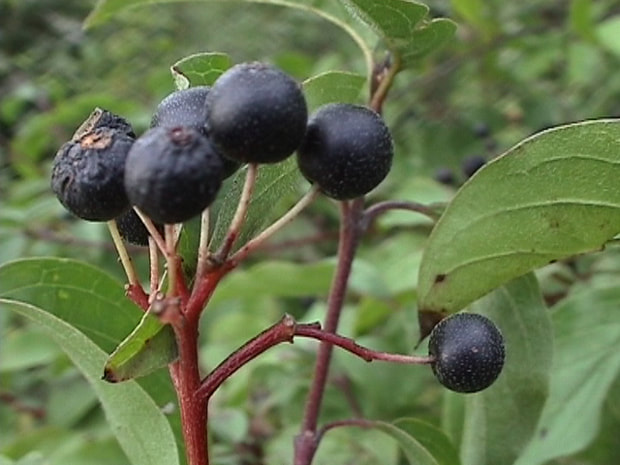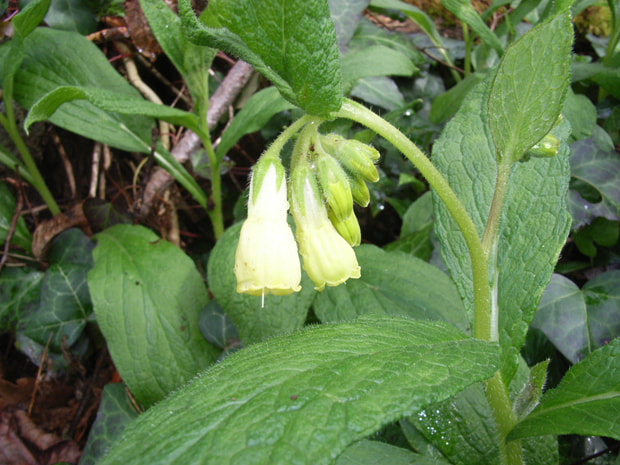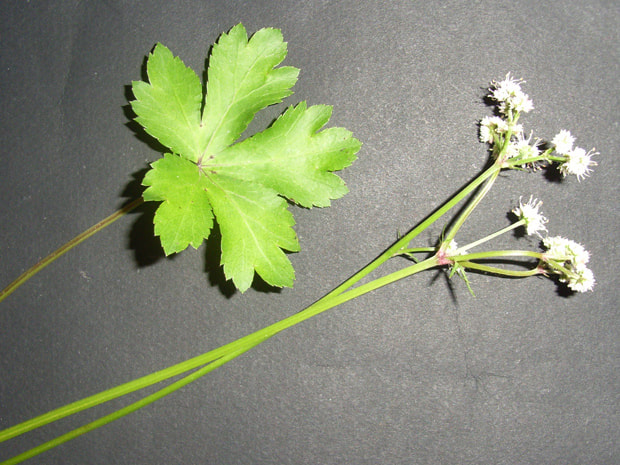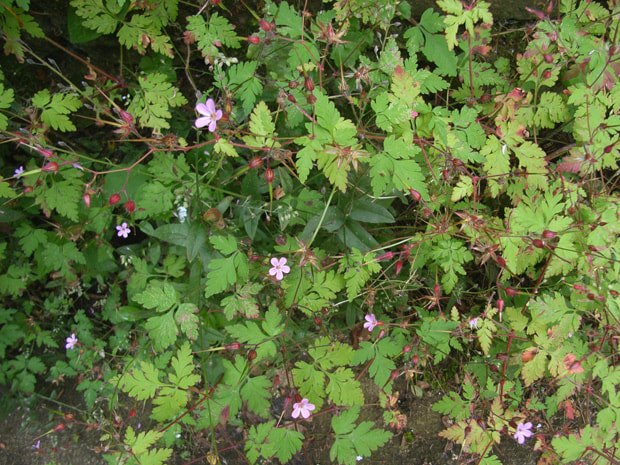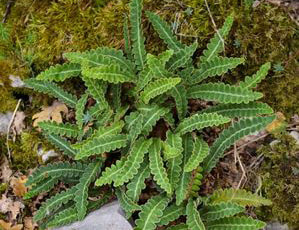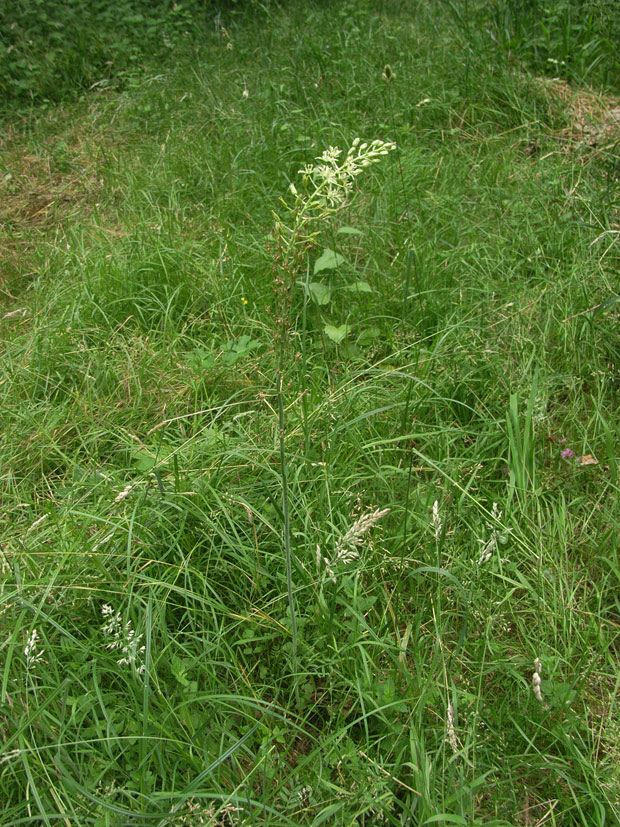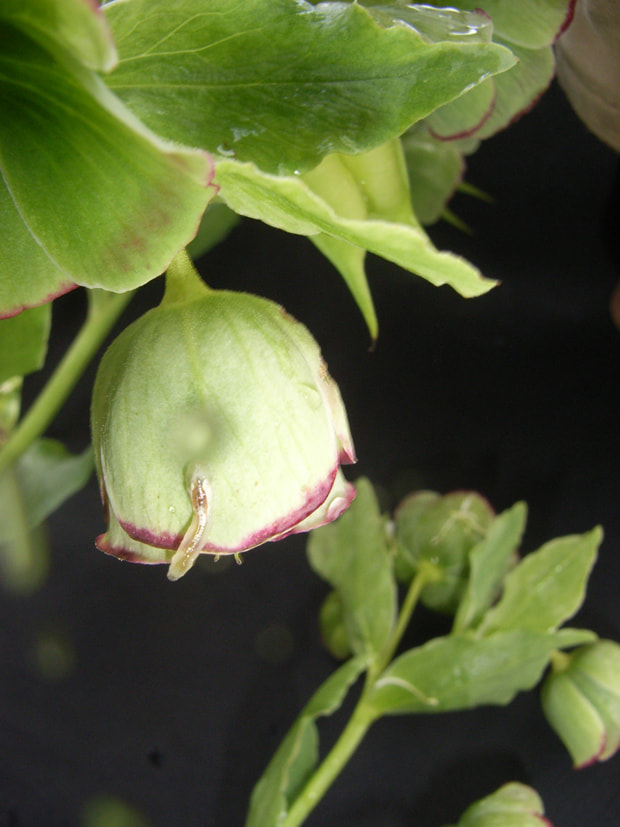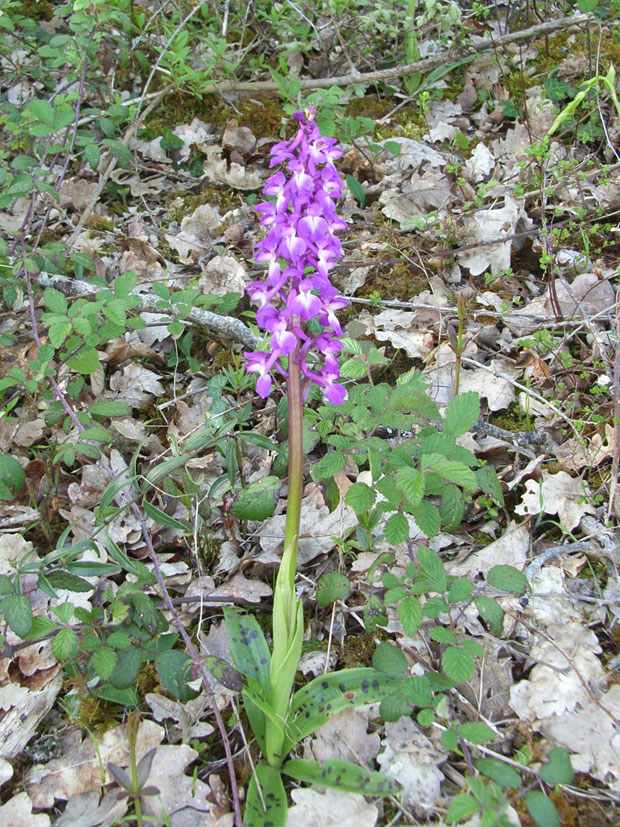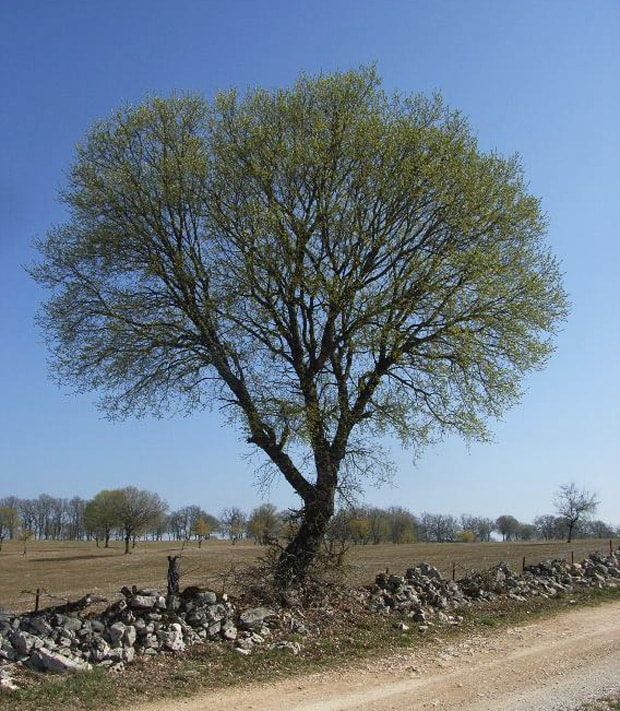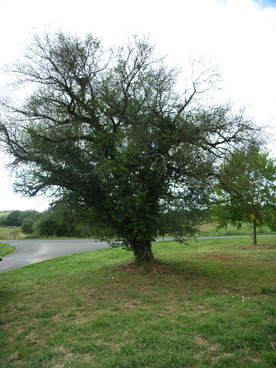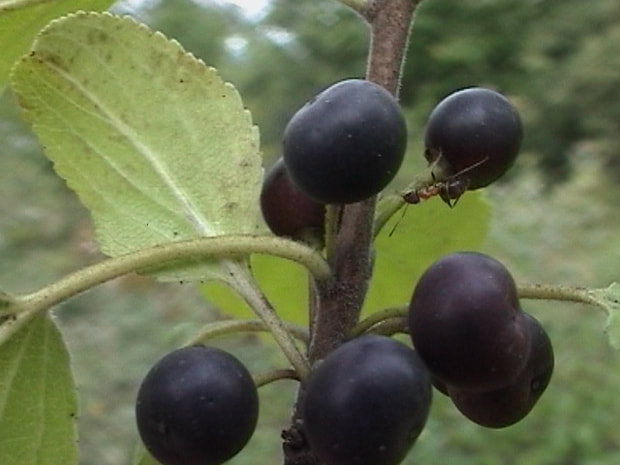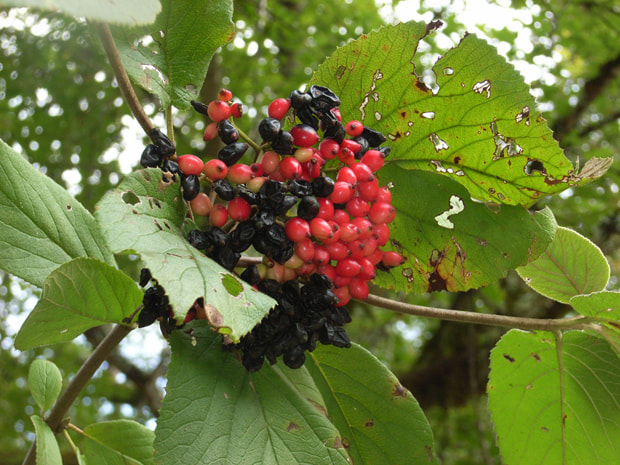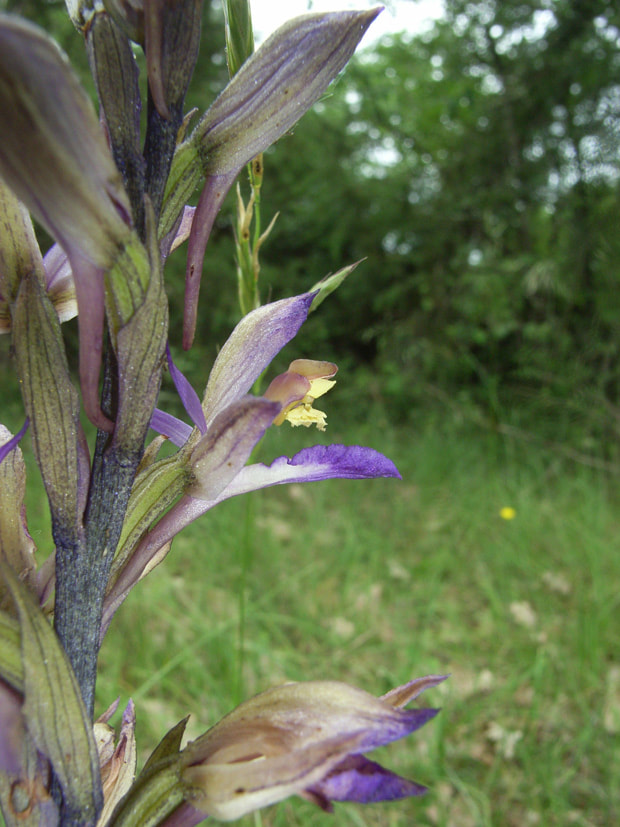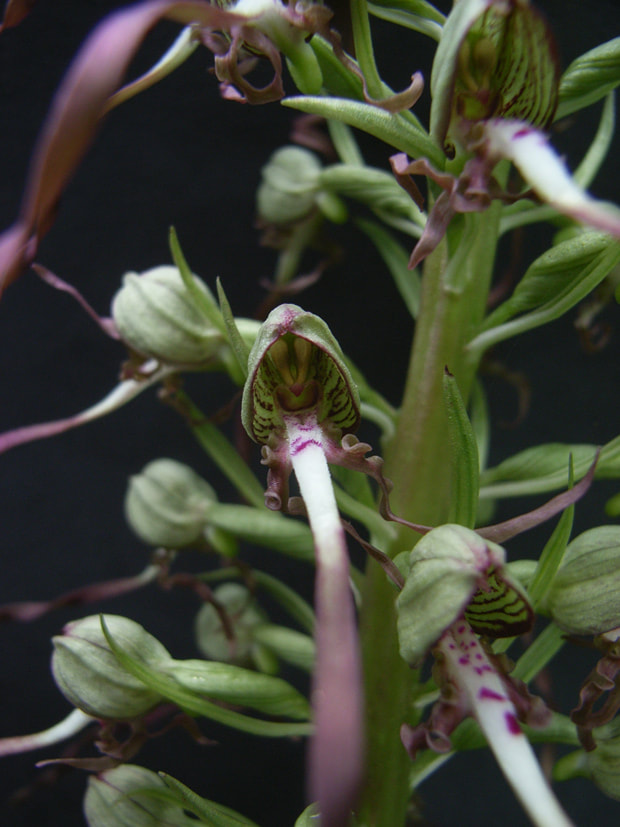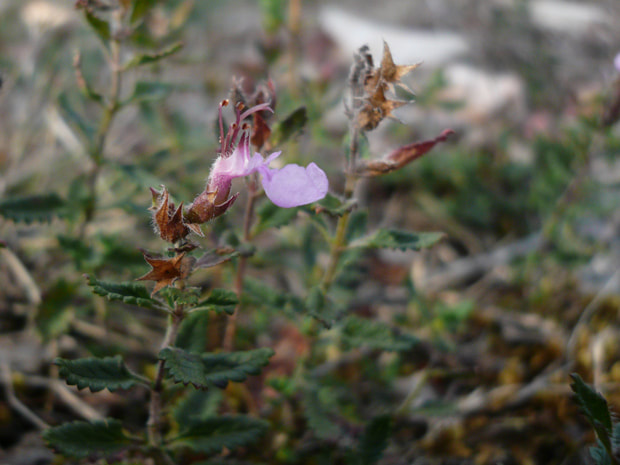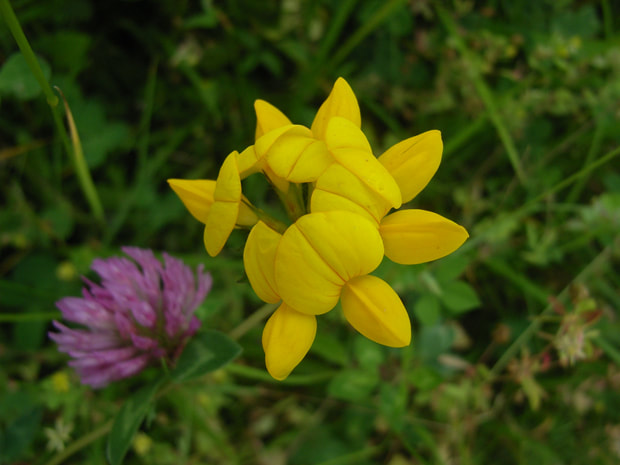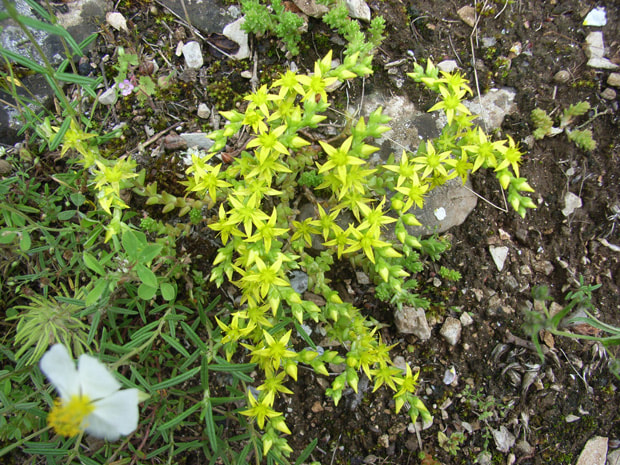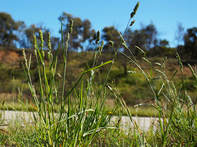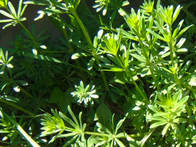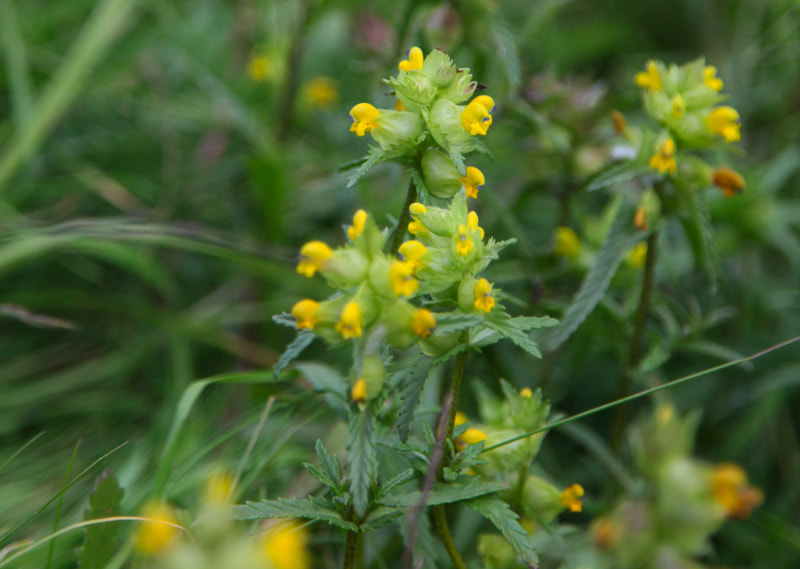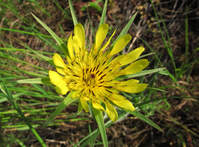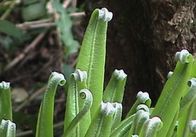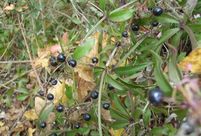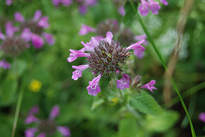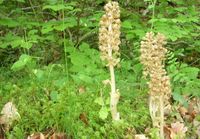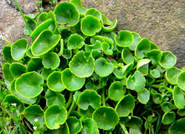By Jean-Guy Astruc, Service Géologique National; Marcel Saule, professor of biology-geology; Jacques Lacroix, botanist; Jean-Pierre Girault, archeologist.
The Puy d'Issolud was recognised as the location of Uxellodunum on 26 avril 2001 by the Minister of Culture.
Gaulish troops, including survivors of Alesia, besieged by Caesar's legions, fought here in what was evidently the last battle for the independence of Gaul. In addition to a large number of Roman armaments found near the Loulié spring, many relics from prehistoric times to the Middle Ages have been found on the plateau of Puy d'Issolud and its surroundings.
GENERALITIES ON THE PLATEAU OF PUY D'ISSOLUD
By Jean-Guy Astruc
Geomorphological description
Puy d'Issolud is a small limestone plateau (approximately 1.5 km2 in area), inclined slightly towards the southwest, separated from the causse of Martel by the valley of the Tourmente. On its southern edge it dominates the valley of the Dordogne 150 to 200 m below. To the east it overlooks Vayrac and the valley of the Sourdoire. In the north, its underlying rock is related to that of the low hills of Liassic clay.
|
Several types of landscape are represented, dependent upon the nature of the soil, each with its own characteristic vegetation, which makes it possible to differentiate them without difficulties.
The limestone bedrock is visible in the cliffs but on the plateau it is masked by superficial weathering. Near the slopes where the limestone is just under the surface, the vegetation is calcareous, with groves of pubescent oaks, juniper, dogwood and Montpellier maple. Several outcrops, from clays to gravel and tertiary pebbles, are dispersed primarily on the eastern edge of the plateau (the Templès). These outcrops are easy to spot because of the silicic vegetation (chestnut, ferns, heather) that they generate. |
Between the Puy d'Issolud farm and the spur limiting the plateau towards the south, the limestone substratum is masked by gravels resulting from gelifraction and clays created by weathering. This sector is cultivated (orchard, walnut and cereals).
At the base of the peripheral cliffs, the marls and Toarcian clays form an inclined slope supporting meadows. These clay soils are partially obscured by colluvium, travertines and scree from localised cliff collapse. These screes support some houses around the Loulié spring. In the east and north-east, a limestone bed (Upper Domérien) is inserted in the clay slope near the farms of Verdié, Belcastel, Maraval and Lastournayries. An accumulation of travertine masks the clay substratum downstream from the Loulié spring. |
Jurassic formations form the substratum of the plateau and its environment. They are represented from the base to the summit by the red bioclastic limestones of the Upper Domerian, the marl and black clays of the Toarcian, the grey bioclastic oncolitic limestones of the lower and middle Aalenian and the light grey oolitic limestones of the Upper Aalenian and Bajocian. On top of the oolitic limestones is a silicified decimetric level.
Superficial formations cover the edge slopes and form discontinuous outcrops on the plateau that can be differentiated as follows:
Superficial formations cover the edge slopes and form discontinuous outcrops on the plateau that can be differentiated as follows:
- Alluvial deposits of the Dordogne, south of the plateau, spread widely across the valley (nearly 2 km wide at its confluence with the Tourmente). Eight to ten metres thick, the deposits are composed of pebbles, gravel and loamy sands with laminar and oblique stratifications. The pebbles average 10 cm in size, up to 60 cm in the substratum. They are often quite flat. The constituents of this detrital material, little altered, are represented by various rocks, often siliceous, originating in the Massif Central (quartz, granites, gneisses, basalts etc ...). Note the rarity of carbonate rocks. The Dordogne, which has roamed over the whole of its low plain, flows on its alluvium in a backfilled valley.
- The alluviums of the Tourmente and Sourdoire valleys are composed almost exclusively of quartz gravel in a clay matrix. This difference is due to the presence of numerous outcrops of tertiary gravel clays in the catchment areas of these two valleys.
- Clay-silt colluvium, resulting from the creeping of weathered clay in the upper Lias, in many places conceals the substratum on the peripheral slopes of the plateau.
- Travertine, with plant debris, form isolated masses. These encrustations alongside waterfalls, are formed by the precipitation of calcium carbonates dissolved in karstic waters. Rivulets from the various branches of the Loulié spring have deposited a thick cavitied mass of several meters of travertine on top of the Toarcian marls underneath.
- Scree, formed of very large blocks coming from the "Bajocian" cliff, locally covers the Toarcian marls. They form areas of relatively stable soils on the slopes.
- Gravel with subangular blunted calcareous elements, in a brown clay-silt matrix containing some quartz gravels, occupies most of the plateau. These pebbles and their dissolution residues come mainly from the gelification of the underlying limestones. They partially fill the lapiaz and are slowly drawn deeply down by the karst activity.
- Gravel and pebble clays form discontinuous outcrops near the top of the plateau. The formation, as it appears on the outcrops, consists of clayey gravels and quartz pebbles (less than 20 cm), often reddened and up to 10 m thick. Karstification (before and after deposition) is responsible for localised, abrupt variations in thickness as shown by the recent earthworks carried out near the farm.
Description of the terrain
Access to the Issolud plateau
Due to its ring of cliffs and its fortifications, Puy-d'Issolud is only accessible by six passages. Currently, it is served only by a single road that goes northeast to Roujou at the top of the plateau. This route dates from the 19th century.
To the north-west, the paved road leading to Lou Portale de Roma (the gateway of Rome) is the old main carriageway, a cart road mentioned by name as early as 1474 (Departmental Archives of Lot, III E, register of P. d'Orlhac, notary in Martel, f° 60, noted by Jean Lartigaut).
To the west, the passage called Pas de la Brille, above the Loulié spring, leads to a winding path for pedestrians and pack animals. The width of the passage varies from 2.00 to 2.50 m and it is bordered by two dry stone walls 2 to 3 meters high, which include large blocks in places.
To the northeast is the passage of the Roujou farm.
To the east is the narrow passage called Pas Rouge. To the southeast is the passage called Labro.
In the southwest there is the footpath know as Aiguillat or Tourettes footpath.
The last four passages are in fact only very narrow winding tracks, which climb very steep slopes and weave between the rocks.
To the north-west, the paved road leading to Lou Portale de Roma (the gateway of Rome) is the old main carriageway, a cart road mentioned by name as early as 1474 (Departmental Archives of Lot, III E, register of P. d'Orlhac, notary in Martel, f° 60, noted by Jean Lartigaut).
To the west, the passage called Pas de la Brille, above the Loulié spring, leads to a winding path for pedestrians and pack animals. The width of the passage varies from 2.00 to 2.50 m and it is bordered by two dry stone walls 2 to 3 meters high, which include large blocks in places.
To the northeast is the passage of the Roujou farm.
To the east is the narrow passage called Pas Rouge. To the southeast is the passage called Labro.
In the southwest there is the footpath know as Aiguillat or Tourettes footpath.
The last four passages are in fact only very narrow winding tracks, which climb very steep slopes and weave between the rocks.
THE FLORA OF PUY D'ISSOLUD
By Marcel Saule and Jacques Lacroix (photos)
Near the confluence of the valleys of the Tourmente and the Dordogne, an area dedicated to fields, pastures and orchards where the meandering stream is accompanied by a wooded gallery of poplars, alders and willows, the Puy-d'Issolud, an isolated piece of the causse surrounded by high cliffs, asserts itself as the domain of the pubescent oak. This apparent uniformity, however, provides some open spaces where crops and meadows have survived despite a gradual decline that began in the early twentieth century. Even within the oak groves, in areas where the ungrateful or difficult-to-access natural environment has not been disturbed by human intervention, two flora can be clearly differentiated:
These more or less impoverished flora are found on the plateau in areas where soil and terrain relief offers them favorable situations, along with a host of species which are common or inherited from former cultivation.
- exposed to the north and north-west - a sciaphile flora (which likes the shade).
- exposed to the south and south-east - a thermophilic flora (which likes heat) and even xerophilic flora
These more or less impoverished flora are found on the plateau in areas where soil and terrain relief offers them favorable situations, along with a host of species which are common or inherited from former cultivation.
The oak grove and its undergrowth, on the north-west and northern slopes from Loulié to Rouxou:
the sciaphile flora
|
The impact of human activities has been limited by the very steep slope. Timber felling regularly carried out in the past has not hindered the rapid regeneration of forest cover in the form of coppices or from natural seedlings.
The arboreal stratum dominated by downy Oak and hornbeam (Charmaie-Chenaie) is completed by:
Ivy (Hedera helix), wild madder (Rubia peregrina) and black bryony (Tamus communis), use the support of the trunks or branches to hoist themselves towards the light. The early flowering spurge laurel (Daphne laureola), the butcher's broom (Ruscus aculeatus) and the field rose (Rosa arvensis), whose branches spread out on the ground, form a modest shrub layer. The rich herbaceous layer provides evidence of good plant biodiversity conservation with a high number of geophytes, plants that in winter retain only organs buried in the earth (bulbs, tubers or rhizomes). Many can be maintained only in deep, undisturbed soils. From the first good days of winter and then throughout the spring their flowering is renewed, brightening the undergrowth with the freshness of their colours and the elegance of their inflorescence. Thus, in the month of January, the snowdrops (Galanthus nivalis) hatch, with their milky corollas; and the stinking hellebore (Helleborus foetidus) develops a generous bouquet of greenish-cream flowers above a rosette of evergreen fan-cut leaves. February-March brings a great parade of wild daffodils (Narcissus pseudonarcissus) whose wide-open bright yellow trumpet is surrounded by cream petals spread in a star. More discreet are the blooms of the violet (Viola alba), the early dog violet (Viola reichenbachiana) with purple blue corolla, and the alpine squill with two leaves (Scilla bifolia), a ravishing liliaceae with corollas of an intense blue. In March-April there is the lesser or common periwinkle (Vinca minor) which with its runners weaves real carpets on the ground, the narrow-leaved lungwort (Pulmonaria longifolia) stained with white, the greater stitchwort (Stellaria holostea), the cuckoo flower (Cardamine pratense), cruciferous with purple flowers, the European sanicle (Saniculum europaeum) with its short umbel of white flowers, the wood spurge (Euphorbia amygdaloides), the perennial dog's mercury, also of the spurge family (Mercurialis perennis), the lesser celandine or pilewort (Ficaria ranunculoides), etc ... In April-May it is the turn of Solomon's seal (Polygonatum multiflorum), a false lily of the valley whose narrow bells in short hanging clusters attach to the axils of the leaves carried on a long arched stem. The early purple orchid (Orchis mascula) with black-stained leaves, the common columbine or granny's nightcap (Aquilegia vulgaris) whose large skilfully crafted blue flower extends by five coiled spurs, germander speedwell or cat’s eyes (Veronica chamaedrys) and its small azure flowers in upright spikes, tuberous comfrey (Symphytum tuberosum), narrow-leaved bitter-cress (Cardamine impatiens), bush vetch (Vicia sepium), herb-Robert (Geranium robertianum), wood avens or St Benedicts herb (Geum urbanum), the parasitic ivy broomrape (Orobanche hederae), bird's nest orchid (Neottia nidus-avis), a rare saprophyte orchid whose flowers are pale brown on a long spike This plant derives its nutrition from a mycorrhizal fungus in the soil or litter which in turn derives nutrition from tree roots, the similar twayblade (Listera ovata/Neottia ovata), etc ... In May-June the beautiful golden heads of the leopard's bane (Doronicum pardalianches) open, and easily compete with the wall hawkweed (Hieracium murorum) and the wall lettuce (Mycelis muralis), the white umbels of the cow parsley (Anthriscus sylvestris), the long clusters of delicate pale green flowers of the wild asparagus (Ornithogalum pyrenaicum), the garden star of Bethlehem or grass lily (Ornithogalum umbellatum) and its white star-shaped flowers, the discreet three-veined apetalous sandwort (Moehringia trinervia), the greenish-leaved greater butterfly orchid (Platanthera chlorantha), the beautiful ppeach-leaved bellflower (Campanula persicifolia), the yellow cluster of hairy St. John's Wort (Hypericum hirsutum), the flat pea or narrow-leaved everlasting pea (Lathyrus sylvestris) which evokes the sweet pea, and especially the rare martagon lily or Turk's cap lily (Lilium martagon) - highly toxic to cats - with scented pink flowers and petals punctuated with purple, whose small population must be scrupulously respected. Some grasses, sedges and junceae characteristic of fresh undergrowth accompany the species already mentioned: Melique uniflora (Melica uniflora), Millet spread (Millium effusum), Bromegrass (Bromus asper), Carex forest (Carex sylvatica), Luzule de Forster (Luzula Forsteri), etc ... |
The soft shield fern (Polystichum setiferum) spread as if in a large basket, and the hart’s-tongue (Phyllitis Scolopendrium) grow on the ground, while the intermediate polypody and southern polypody (Polypodium interjectum, Polypodium australe) are epiphytic ferns which encrust their rhizomes in the mossy bark of old trees.
These same polypodys are found on the mossy ledges of shaded limestone rocks, the cracks of which host several ferns such as rustyback (Asplenium ceterach), maidenhair spleenwort (Asplenium trichomanes), black spleenwort (Asplenium adiantum-nigrum) along with other species: navelwort (Umbilicus rupestris), hawkweed, wall lettuce, wood bluegrass (Poa nemoralis),
etc. …
These same polypodys are found on the mossy ledges of shaded limestone rocks, the cracks of which host several ferns such as rustyback (Asplenium ceterach), maidenhair spleenwort (Asplenium trichomanes), black spleenwort (Asplenium adiantum-nigrum) along with other species: navelwort (Umbilicus rupestris), hawkweed, wall lettuce, wood bluegrass (Poa nemoralis),
etc. …
The oak grove and its undergrowth on the south-eastern slope from Souroque to the rock of L'Ambarre: the heliophilous and xerophilic flora
|
Spaces favorable to xerothermophilic undergrowth are provided in these areas of fairly sparse forest cover, on shallow soil or on relatively stabilised scree, sometimes anchored directly on limestone outcrops in the form of ‘balms’ (cavities under an overhanging rock or ledge) or lapiaz, provides spaces.
The tree and shrub strata include, in addition to the downy oak, some species of Mediterranean or sub-Mediterranean affinities such as :
These plants like clearings and sunny edges on limestone, and are addtional to the Mediterranean species. Despite difficult living conditions (drought or low rainfall during the summer period with relentless sunshine and high temperatures, poor water retention capacity of lean and often very stony soils), the herbaceous layer is fairly rich in species that occur throughout spring and give a generous palette of colours:
They perfectly illustrate this xerothermophilic flora, along with :
|
The discontinuous undergrowth - composed of characteristic grasses such as the blue moor grass (Sesleria caerulea), the erect brome (Bromus erectus), the Timothy Boehmer (Phleum boehmeri) - and the edge of the undergrowth, are favorable for the installation of some orchids :
On the gravelly and dusty soil of rock shelters where the oak groves cannot invade, some nitrophilic species are present (plants that prefer soil rich in nitrates, for example on land where certain wild mammals gather):
|
The dry stone walls which delimited the worked plots, the cayrous (piles of stones) resulting from the stone removal of the fields, the ruins of houses and barns and the preserved buildings testify to a strong human occupation and activities associating with agriculture and livestock breeding. At the start of the 20th century, twelve families still derived most of their resources from Puy d'Issolud.
Most of the forest area of the plateau is the result of natural reforestation including the remains of a useful flora introduced by man, such as the vine, plum, pear, quince and the service tree or sorb tree (Sorbus domestica) - including some magnificent subjects that compete in size with the oaks that surround them - and the walnut trees, etc …
At the initial stage of reconquest, the common juniper (Juniperus communis) and the thorny trees constitute islands of shrub vegetation with:
- blackthorn or sloe (Prunus spinosa),
- dog rose (Rosa canina),
- small-leaved sweet briar (Rosa agrestis),
- blackberry (Rubus fruticosus),
- common hawthorn (Crataegus monogyna),
- purging buckthorn (Rhamnus cathartica), etc ...
These islets expand, with dogwood, privet, hazel, small white elm and with twigs covered with cork, etc., This is followed by the installation of young oaks, hornbeams, maples, wild cherries (Cerasus avium) from fruit brought by birds, rodents or the wind. These plants soon emerge from the cover before asserting their supremacy.
The shrub layer and the herbaceous layer gradually reconstitute there: the best-lit and warmest areas welcome the Montpellier maple, the viburnum wayfarer or the Etruscan honeysuckle and other species of thermophilic flora described above. The cooler valleys, where the humus is thicker and the soil deeper, host some representatives of the sciaphile flora mentioned in the first paragraph.
The regularly mowed meadows regenerate progressively, often grazed by sheep after the harvest is over, and deliver the classic flora of the Caussenard grasslands:
|
alfalfa or lucerne,
barren brome, birds-eye speedwell, bulbous buttercup, cocksfoot, common fleabane, common sainfoin, crested dog’s-tail, |
field scabiosa,
garden bird's-foot trefoil, grape hyacinth, hairy common velvet grass, hare’s-foot clover, hedge bedstraw, marguerite, meadow salsify, |
meadow vetchling,
red clover, rough hawksbeard, ribwort plantain, marguerite, meadow foxtail, quaking grass, red rattle, |
ryegrass,
soft brome, tall oat-grass, white or Dutch clover, wild carrot, yellow rattle or cockscomb, etc... |
This variety of flowering plants includes those representative of thermoxerophilic lawns, such as erect Brome, heath false brome, lfield eryngo, perennial yellow woundwort, le sulphur clover, etc, betraying by place the water deficit linked to the long summer drought and to the low water retention of too shallow soils, an observation reinforced by the presence of arid hillside plants on certain very hot ridges, such as the narrow-leaved clover (Trifolium angustifolium) and the xeranthemum daisy (Xeranthemum cylindraceum).
|
We will pass silently over the cosmopolitan flora of the areas now used for agriculture. Highly impoverished by the use of weedkillers, they give only a derisory image of the brilliant procession of species (cornflowers, poppies, corn-cockle, corn camomile, yellow loosestrife, delphinium, hemp-nettle , etc ..) which used to enliven the harvest with their vivid colour. |
The wooded slope located upstream and on either side of the Loulié spring
The orientation towards the west, the pronounced dip and the projections of the limestone cliff which frame the site, create conditions of shade and freshness which shelter this area from any marked summer sunshine, and favour the development of a fairly dense hardwood canopy with a fairly rich undergrowth.
Species that make up the tree layer
|
|
Big trees frequently provide support for clematis (Clematis vitalba), and ivy (Hedera helix) which itself supports the parasitic ivy broomrape (Orobanche hederae).
Shrub layer
Eglantine rose, Rosa Eglanteria; butcher's broom, Ruscus aculeatus ; Blackberry, Rubus fruticosus s. l. ; spurge laurel, Daphne laureola ; Cornouiller sanguin, common dogwood ; wild privet, Ligustrum vulgare etc...
Herbaceaous layer
Vascular cryptogams : (a fern or moss reproducing by spores, without flowers or seeds) :
- soft shield fern, Polystichum setiferum ;
- forked male fern, Dryopteris filix-max ;
- black spleenwort fern, Asplenium adiantum-nigrum ;
- hart’s tongue fern, Asplenium scolopendrium ;
- eagle fern, Pteridium aquilinum ;
|
Monocotyledons (flowering plants the seeds of which typically contain only one embryonic leaf or cotyledon) :
|
Dicotyledons (flowering plants the seeds of which typically contain two embryonic leaves or cotyledons) :
|
Rupicolous flora (cracks and ledges of shaded rocks)
The vegetation in the immediate vicinity of the Loulié spring
This was formerly a place of passage and water supply with a basin and old wash-houses, as much for the inhabitants of the hamlet of Loulié as for the families of farmers who lived on the plateau of Puy-d'Issolud (there were 12 homes in 1900). When the water in the cisterns and ponds was exhausted, the environment was affected by trampling, the presence of men and domestic animals, and was deeply reworked by successive excavations. The vegetation bears witness to this: it associates some sylvatic species listed above with a ruderal flora. A ruderal species is a plant species that is first to colonise disturbed lands, and is propagated by human activities that favour the intrusion of some weeds, as well as a flora of humid environments.
|
The ruderal flora and weeds
|
|
|
The flora of humid environments :
|
On irrigated tufs :
Plants immerged or floating :
|
CONCLUSION
The erosion of the high reliefs and peripheral depressions, the resulting contrasting outcrops and the uneven distribution of soils, have led to an appreciable wealth of flora on Puy-d'Issolud, dominated by the pubescent oak.
The steepest and most thankless ground has played the role of conservatory for spontaneous flora, which have regained abandoned land where many remnants of ancient cultures can be found.
Excellent firewood and timber from hornbeams and oaks, an abundance of wild fruits, simple and aromatic plants, plants for dyeing and fodder production - all these have long provided men with a significant share of indispensable resources for their daily lives.
The steepest and most thankless ground has played the role of conservatory for spontaneous flora, which have regained abandoned land where many remnants of ancient cultures can be found.
Excellent firewood and timber from hornbeams and oaks, an abundance of wild fruits, simple and aromatic plants, plants for dyeing and fodder production - all these have long provided men with a significant share of indispensable resources for their daily lives.
Photo gallery
2019 © Tous droits réservés - Toute reproduction interdite sans l'autorisation de l'auteur.

